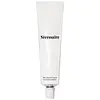What's inside
What's inside
 Key Ingredients
Key Ingredients

 Benefits
Benefits

 Concerns
Concerns

 Ingredients Side-by-side
Ingredients Side-by-side

Water
Skin ConditioningGlycerin
HumectantParaffinum Liquidum
EmollientCetearyl Alcohol
EmollientGlyceryl Stearate
EmollientPEG-100 Stearate
Cyclopentasiloxane
EmollientPalmitic Acid
EmollientButyrospermum Parkii Butter
Skin ConditioningPolysorbate 60
EmulsifyingStearic Acid
CleansingCarbomer
Emulsion StabilisingSodium Hyaluronate
HumectantTriethanolamine
BufferingPropylene Glycol
HumectantMyristic Acid
Cleansing1,2-Hexanediol
Skin ConditioningButylene Glycol
HumectantCaprylyl Glycol
EmollientCentella Asiatica Extract
CleansingPolygonum Cuspidatum Root Extract
AntioxidantScutellaria Baicalensis Root Extract
AstringentCamellia Sinensis Leaf Extract
AntimicrobialGlycyrrhiza Glabra Root Extract
BleachingRosmarinus Officinalis Leaf Extract
AntimicrobialChamomilla Recutita Flower Extract
MaskingPhenoxyethanol
PreservativeDisodium EDTA
Aroma
Benzyl Benzoate
AntimicrobialCitronellol
PerfumingGeraniol
PerfumingWater, Glycerin, Paraffinum Liquidum, Cetearyl Alcohol, Glyceryl Stearate, PEG-100 Stearate, Cyclopentasiloxane, Palmitic Acid, Butyrospermum Parkii Butter, Polysorbate 60, Stearic Acid, Carbomer, Sodium Hyaluronate, Triethanolamine, Propylene Glycol, Myristic Acid, 1,2-Hexanediol, Butylene Glycol, Caprylyl Glycol, Centella Asiatica Extract, Polygonum Cuspidatum Root Extract, Scutellaria Baicalensis Root Extract, Camellia Sinensis Leaf Extract, Glycyrrhiza Glabra Root Extract, Rosmarinus Officinalis Leaf Extract, Chamomilla Recutita Flower Extract, Phenoxyethanol, Disodium EDTA, Aroma, Benzyl Benzoate, Citronellol, Geraniol
Water
Skin ConditioningDicaprylyl Carbonate
EmollientGlycerin
HumectantCaprylic/Capric Triglyceride
MaskingCetearyl Alcohol
EmollientSqualane
EmollientGlyceryl Stearate
EmollientCetearyl Olivate
Butyrospermum Parkii Butter
Skin ConditioningSorbitan Olivate
EmulsifyingGlyceryl Caprylate
EmollientNiacinamide
SmoothingTocopherol
AntioxidantSclerocarya Birrea Seed Oil
HumectantSclerocarya Birrea Seed Butter
EmollientCetyl Hydroxyethylcellulose
Emulsion StabilisingCaprylhydroxamic Acid
Palmitoyl Dipeptide-5 Diaminobutyroyl Hydroxythreonine
Skin ConditioningPalmitoyl Dipeptide-5 Diaminohydroxybutyrate
Skin ConditioningPalmitoyl Tripeptide-1
Skin ConditioningPalmitoyl Tetrapeptide-7
Skin ConditioningPalmitoyl Hexapeptide-12
Skin ConditioningHydrogenated Lecithin
EmulsifyingHydrated Silica
AbrasiveSilica Dimethyl Silylate
EmollientCeramide Ag
HumectantCeramide AP
Skin ConditioningCeramide Ng
Skin ConditioningCeramide NP
Skin ConditioningCeramide EOP
Skin ConditioningTetrasodium Glutamate Diacetate
Cholesterol
EmollientDipropylene Glycol
HumectantDisodium Phosphate
BufferingSodium Phosphate
BufferingSodium Hydroxide
BufferingWater, Dicaprylyl Carbonate, Glycerin, Caprylic/Capric Triglyceride, Cetearyl Alcohol, Squalane, Glyceryl Stearate, Cetearyl Olivate, Butyrospermum Parkii Butter, Sorbitan Olivate, Glyceryl Caprylate, Niacinamide, Tocopherol, Sclerocarya Birrea Seed Oil, Sclerocarya Birrea Seed Butter, Cetyl Hydroxyethylcellulose, Caprylhydroxamic Acid, Palmitoyl Dipeptide-5 Diaminobutyroyl Hydroxythreonine, Palmitoyl Dipeptide-5 Diaminohydroxybutyrate, Palmitoyl Tripeptide-1, Palmitoyl Tetrapeptide-7, Palmitoyl Hexapeptide-12, Hydrogenated Lecithin, Hydrated Silica, Silica Dimethyl Silylate, Ceramide Ag, Ceramide AP, Ceramide Ng, Ceramide NP, Ceramide EOP, Tetrasodium Glutamate Diacetate, Cholesterol, Dipropylene Glycol, Disodium Phosphate, Sodium Phosphate, Sodium Hydroxide
 Reviews
Reviews

Ingredients Explained
These ingredients are found in both products.
Ingredients higher up in an ingredient list are typically present in a larger amount.
This ingredient is also known as shea butter. It is an effective skin hydrator and emollient.
Emollients help soothe and soften your skin. It does this by creating a protective film on your skin. This barrier helps trap moisture and keeps your skin hydrated. Emollients may be effective at treating dry or itchy skin.
Shea butter is rich in antioxidants. Antioxidants help fight free-radicals, or molecules that may harm the body. It is also full of fatty acids including stearic acid and linoleic acid. These acids help replenish the skin and keep skin moisturized.
While Shea Butter has an SPF rating of about 3-4, it is not a sunscreen replacement.
Shea butter may not be fungal acne safe. We recommend speaking with a professional if you have any concerns.
Learn more about Butyrospermum Parkii ButterCetearyl alcohol is a mixture of two fatty alcohols: cetyl alcohol and stearyl alcohol. It is mainly used as an emulsifier. Emulsifiers help prevent the separation of oils and products. Due to its composition, it can also be used to thicken a product or help create foam.
Cetearyl alcohol is an emollient. Emollients help soothe and hydrate the skin by trapping moisture.
Studies show Cetearyl alcohol is non-toxic and non-irritating. The FDA allows products labeled "alcohol-free" to have fatty alcohols.
This ingredient is usually derived from plant oils such as palm, vegetable, or coconut oils. There is debate on whether this ingredient will cause acne.
Due to the fatty acid base, this ingredient may not be Malassezia folliculitis safe.
Learn more about Cetearyl AlcoholGlycerin is already naturally found in your skin. It helps moisturize and protect your skin.
A study from 2016 found glycerin to be more effective as a humectant than AHAs and hyaluronic acid.
As a humectant, it helps the skin stay hydrated by pulling moisture to your skin. The low molecular weight of glycerin allows it to pull moisture into the deeper layers of your skin.
Hydrated skin improves your skin barrier; Your skin barrier helps protect against irritants and bacteria.
Glycerin has also been found to have antimicrobial and antiviral properties. Due to these properties, glycerin is often used in wound and burn treatments.
In cosmetics, glycerin is usually derived from plants such as soybean or palm. However, it can also be sourced from animals, such as tallow or animal fat.
This ingredient is organic, colorless, odorless, and non-toxic.
Glycerin is the name for this ingredient in American English. British English uses Glycerol/Glycerine.
Learn more about GlycerinGlyceryl Stearate is a mix of glycerin and stearic acid.
It is used to stabilize the mixing of water and oil ingredients. By preventing these ingredients from separating, it can help elongate shelf life. It can also help thicken the product's texture.
As an emollient, it helps soften skin and supports barrier-replenishing ingredients.
In cosmetics, Glyceryl Stearate is often made from vegetable oils or synthetically produced.
This ingredient may not be fungal-acne safe
Fun fact: The human body also creates Glyceryl Stearate naturally.
Learn more about Glyceryl StearateWater. It's the most common cosmetic ingredient of all. You'll usually see it at the top of ingredient lists, meaning that it makes up the largest part of the product.
So why is it so popular? Water most often acts as a solvent - this means that it helps dissolve other ingredients into the formulation.
You'll also recognize water as that liquid we all need to stay alive. If you see this, drink a glass of water. Stay hydrated!
Learn more about Water